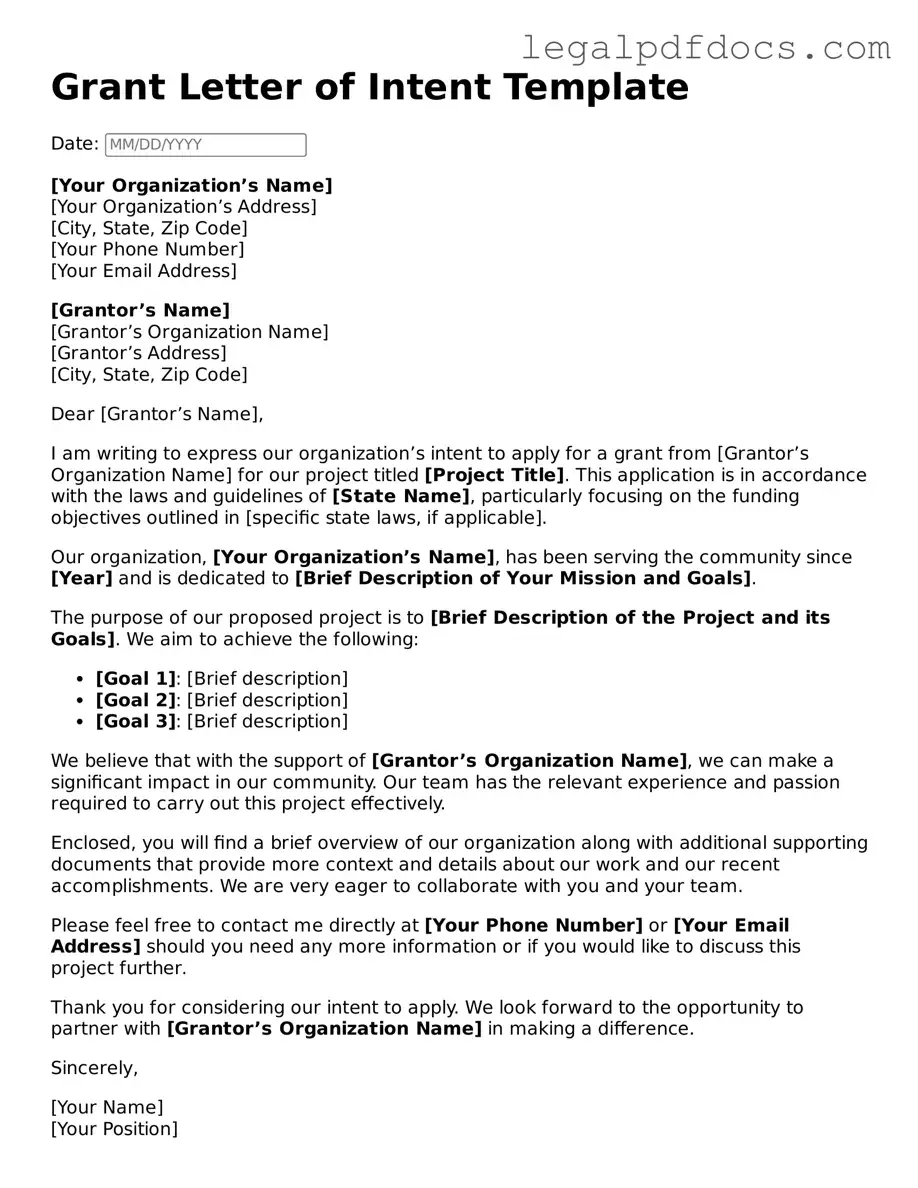The Grant Letter of Intent (LOI) form serves as a crucial first step in the grant application process, acting as a preliminary communication between potential applicants and funding organizations. This document is designed to outline the key elements of a proposed project, including its objectives, significance, and the anticipated impact on the community or field of study. By providing a concise summary, the LOI allows funders to assess the alignment of the project with their funding priorities before inviting a full proposal. Typically, it includes essential information such as the applicant's organization, project title, budget estimates, and a brief description of the methodology. The LOI not only helps streamline the selection process for funders but also enables applicants to clarify their ideas and refine their proposals based on initial feedback. Understanding the nuances of the Grant Letter of Intent form is vital for anyone looking to secure funding, as it lays the groundwork for a successful grant application and fosters a productive relationship between the applicant and the funding body.
